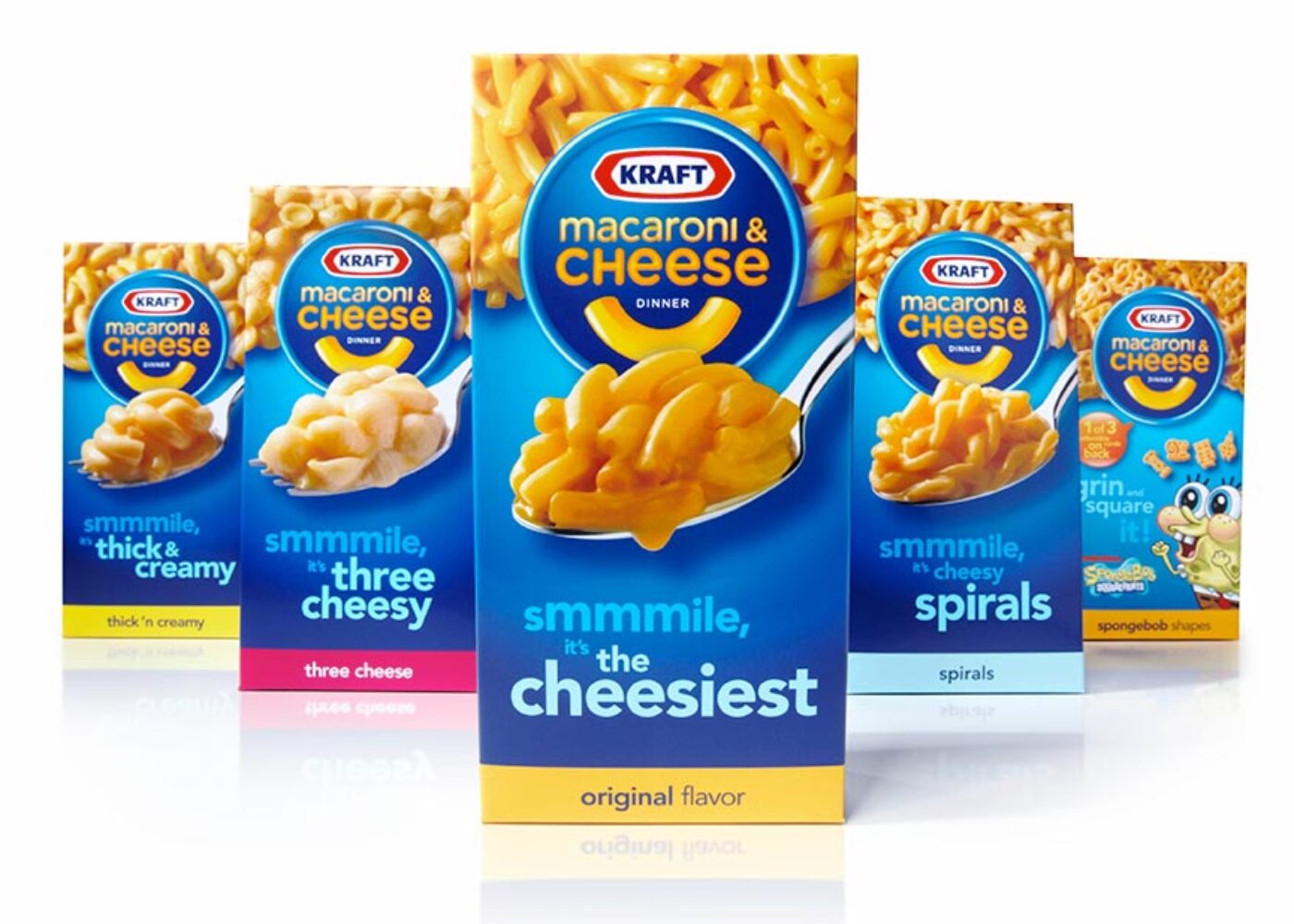Kraft Finally Decides to Ditch Artificial Dyes in Mac and Cheese

On October 31, 2013, the Internet exploded when Kraft announced that they are reformulating some of their signature mac and cheese products to be more nutritious. They announced that they are ditching artificial dyes to make room for better ingredients.
And while boxes of mac and cheese may not be the first thing you think of when it comes to overhauling our kitchens, it is an important one. It’s a staple across the country, and food has a massive impact on us, and up until this announcement, it had been loaded with artificial colors derived from peteroleum byproducts.
Today it is estimated that 50% of Hispanic and African-American children will develop diabetes, that 1 in 90 boys has autism, and that 1 in 4 children has asthma. The Journal of Pediatrics reported that from 2002-2005, there was a 103% increase in diabetes medication for children, a 47% increase in asthma medication, a 41% increase in ADHD medication and a 15% increase in high cholesterol medicine.
Something has to change.
And while the science may be disputed, depending on who is funding the study, as to whether commonly used food dyes such as Yellow 5, Red 40 and 6 others made from petroleum pose a “rainbow of risks” that include hyperactivity in children, cancer (in animal studies), and allergic reactions, because of the problem of hyperactivity, the Center for Science in the Public Interest petitioned the Food and Drug Administration to ban the use of these dyes given that the British government and European Union have taken actions that are virtually ending their use of dyes throughout Europe.
Who knew? Why would an American company pump this stuff into their products? But the analyst in me that covered the food industry knew the answer to that one—because it’s cheaper to use fake ingredients to color food than it is to use real ones.
As I dove into the research, information began to pour out. Much of it highlighted health concerns, and associations to things like hyperactivity, asthma and allergies, but something even bigger stood out: the fact that our very own American companies were making their products differently for eaters overseas. They were using real ingredients, not these artificial colors.
In an article published by the Food and Drink Federation, a Web site that monitors food issues in Europe, Jess Halliday reported that “Asda [U.K. Wal-Mart] has pledged to remove any artificial colours or flavours from its 9,000 own label products, as well as aspartame, hydrogenated fat, and flavour enhancers such as monosodium glutamate.”
Wow. Why was the U.K. Wal-Mart rushing to make such healthy choices, when the U.S. Wal-Mart still offered the same old stuff? Wal-Mart had even been slapped by a lawsuit from the Ajinomoto, the company that now makes aspartame, which claimed that U.K. Wal-Mart’s publicizing of its aspartame-free products was a kind of defamation—all while U.S. Wal-Mart continued to use the sweetener.
Can you imagine how grateful parents in the UK must be when they read this? “[U.K. Wal-Mart] will also meet the Food Standards Agency’s salt-reduction targets–two years ahead of the 2010 deadline,” the article continued.
It struck me as amazing, given how hard fought this issue has been over there. Over in the U.K., our American companies rushed to meet government standards two whole years before they even go into effect. It begs the question, why?
According to Asda/U.K. Wal-Mart food trading director Darren Blackhurt, “We know that our customers, particularly those that are mums and dads, are becoming more and more concerned about what’s in the food they buy.” Indeed, the article continues, “consumer awareness of nutrition and food quality in the UK has soared in the last few years. . . ” Accordingly, U.K. Wal-Mart was planning to spend 30 million pounds, or about $50 million, to reformulate its product line, adding that, “in the main, taste will be unaffected.”
Pretty stunning, right? Clearly learning about this remarkable decision is sure to leave a few American parents a little hyperactive. And if you look at the decision a little more closely, you will discover that Asda/Wal-Mart was far from the only British company to respond to the Southampton Study in such a dramatic way. According to the Food and Drink Federation in the U.K., several companies—whether British-based or British division of American corporations—had started offering their customers color- and additive-free processed foods.
“We are aware of the recent publication from the University of Southampton on selected artificial colours, and we will continue to follow the guidance of regulators on this issue.”—Coca- Cola Great Britain. And in fact, on May 27, 2008, the story broke that Coca Cola was removing sodium benzoate from its products—but only in the U.K.
“Kraft Foods UK has no products aimed at children that contain the ingredients highlighted in the FSA [Southampton] study. . . . [W]ith our recent Lunchables reformulation in the UK, we reduced fat and salt, as well as removed artificial colours and flavours. Without compromising quality, taste and food safety, we will continue to see where we can make changes and still meet consumer expectations.”—Kraft Foods UK
“We know that artificial colours are of concern to consumers, which is why, in 2006, Mars began a programme to remove them from our products. . . in November 2007, Starburst Chews became free from all artificial colours. . . . in December 2007, Skittles were made free from all the artificial colours highlighted in a landmark study by Southampton University. . . We have already removed four colours mentioned in the Southampton study from Peanut and Choco M&M’s, and are in the process of removing the final one so they too will be free from these artificials during 2008.”—Mars UK
“Nestlé UK does not manufacture children’s products that contain any of the additives investigated by the FSA [Southampton] research. . . . and from September 2007, the UK’s favourite kids’ chocolate brand—Milky Bar—is to be made with all natural ingredients.”—Nestlé UK
“We are committed to replacing all artificial colours in our sweets. We note the Southampton University findings, but we had begun this process already because we are continually listening to our customers.” —UK Cadbury Chocolate division
Every time I read over those quotes, I find them absolutely stunning. Why are companies that operate in the U.K.—including our very own U.S. companies—so eager to take out the artificial colors there and so completely reluctant to do so here? Why are they willing to spend the money to reformulate their products there while refusing even to consider such a change-over here?
Maybe the answer can be found in a BBC report on Asda/U.K. Wal-Mart, “Explaining its decision to halt the use of artificial colours and flavours, Asda said it was acting because ‘mums and dads are becoming more and more concerned about what’s in the food they buy.’” An Asda/U.K. Wal-Mart press release elaborates: “Reformulation was hard work, but it was a labour of love.” Well, why can’t they perform that same labor of love over here? Is it too much to ask for what they have overseas?
After all, we’re not asking them to reinvent the wheel—they’ve already removed these ingredients from their products elsewhere. So why can’t our children get the same protection? Why can’t they serve up the same products to us?
Thankfully, Kraft is stepping up. For the last twenty years, parents and eaters have been calling for this change. In no way is that more obvious than in the work of Annie Whitley, a mom who wanted to feed her kids mac and cheese without the junk and fake food colorings in it. Her passion was so strong that a company was built up around this vision, and Annie’s was born, a company that has since gone public. Her concerns were addressed by science out of the Center for Science in the Public Interest. Recognizing the importance of the studies being conducted overseas (and the industry funded nature of the studies being conducted here), they got down to the scientific research, publishing reports like “Rainbow of Risks” in an effort to inform parents.
Perhaps Kraft saw the writing on the wall when another mom stepped forward with a petition to the makers of M&Ms to get the fake food colors out of those products, too. It continues to go viral here. New companies like UNREAL are showing it can be done, which begs the question: why are we still doing it the old way when these new and improved solutions are available to us?
The answer is: we don’t.
The people that have been on the frontline of our children are owed such enormous gratitude for this work. Courage is contagious, and it’s time for a tsunami of bravery by industry. Consumers are ready, executives with young children are ready.
Consumers have incredible power when it comes to creating changes in our food system. Annie’s successful IPO in 2012 demonstrated it, as well as Chipotle’s recent announcement to source ingredients that are not genetically engineered. Their stock soared to record highs on the announcement.
The list of artificial and fake ingredients in our food is long, but our own American companies have removed these ingredients, from artificial growth hormones, to growth promoting antibiotics, to ingredients even used in yoga mats, from the products they sell overseas. They can do the same thing here.
As people around the country lend their talents to this food awakening, one thing is clear: the days of cloak and conceal are over, and food companies that step forward and embrace this changing consumer demand for less junked up food will be rewarded both in the media and in the marketplace.
The incentives are aligned, the question is: which company will be next?





